by Amineddoleh & Associates LLC | Jan 28, 2025 |
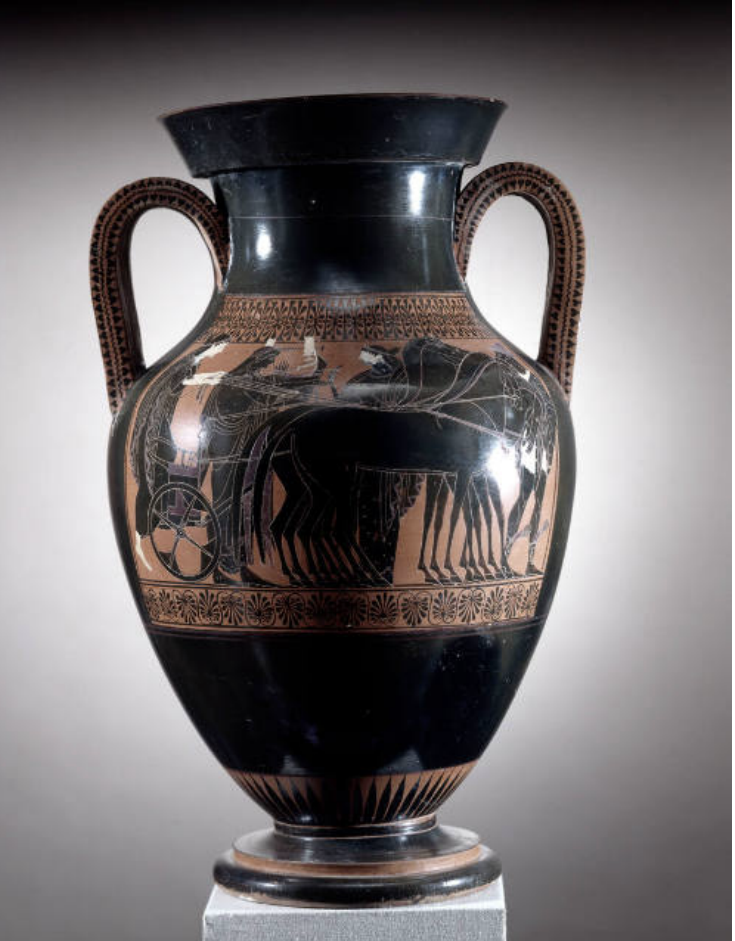
Blac-figure painted amphora, Greece, 6th century BC
It has been a pleasure for Amineddoleh & Associates LLC to have worked on the important repatriation and loan agreement between the Italian Ministry of Culture (Italy) and the Worcester Art Museum (the Museum). It is a wonderful example of how ethical museum practices build strong relationships with foreign governments.
The Museum and Italy announced today that they have entered into a long-term loan agreement as part of the Museum’s voluntary return of two objects from its collection. Earlier this year, the Museum hired its first Provenance Research Specialist to identify provenance gaps and conduct new research into its collections. As a result of this work, the Museum identified two antiquities acquired in the mid-1950s—a black-figure amphora (storage jar) and a kylix (drinking cup)—that appeared to have been unlawfully removed from Italy.
The Museum made the ethical decision to voluntarily return the works to Italy. Amineddoleh & Associates worked with the Museum and Italy to draft the terms of a new cultural cooperation agreement. As part of the agreement, the Museum will display the two items as long-term loans for a period of four to eight years. After this loan period, these objects will be returned to Italy in exchange for a loan of comparable antiquities from Italian museums. The loans will recur on a rotating basis. This is the first such agreement of its kind for the Museum.
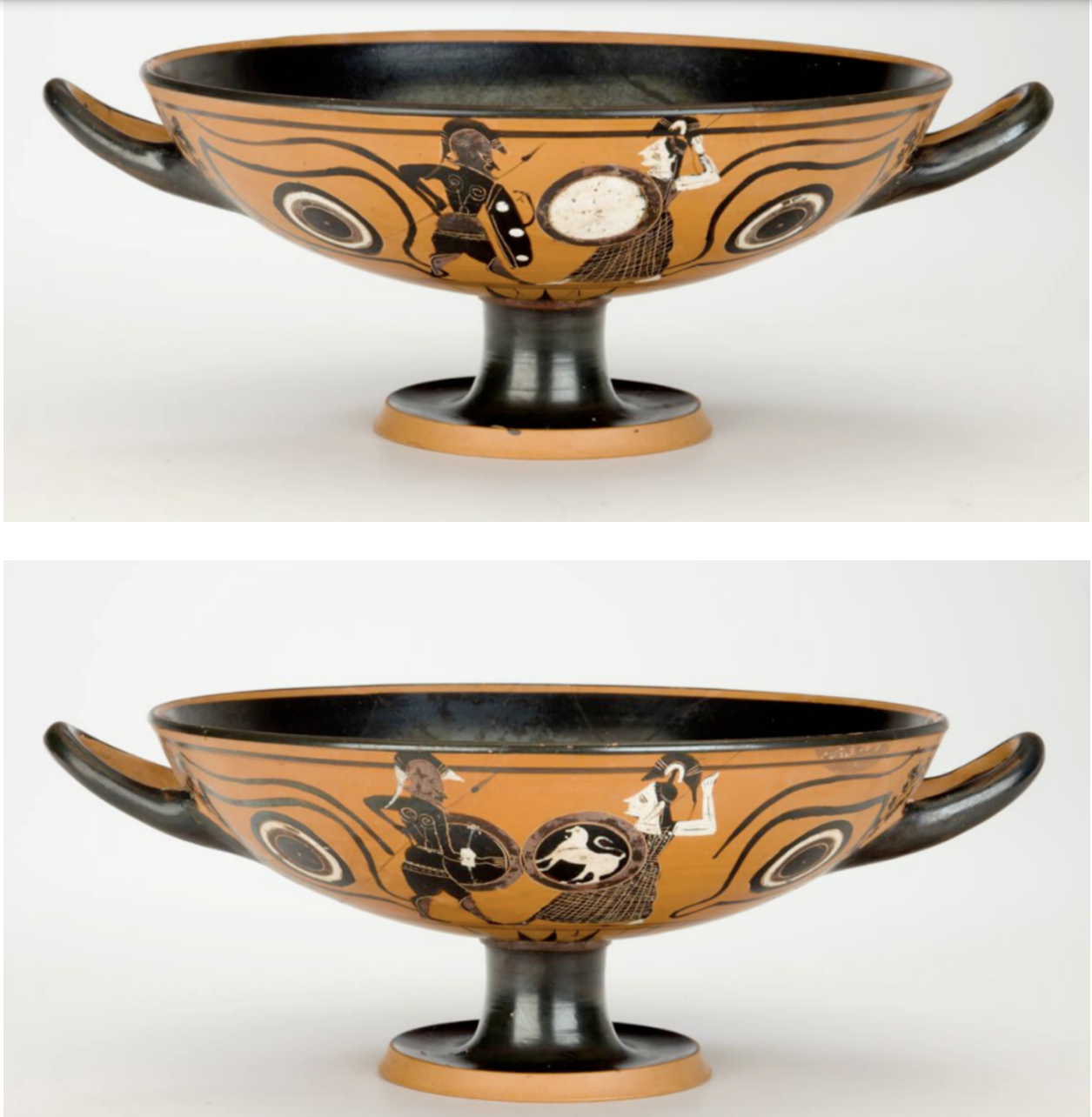
Kylix (drinking cup), Greece, 6th century BC
This project is part of the Museum’s ongoing provenance work, performed by Daniel W. Healey, the institution’s inaugural Provenance Research Specialist, under the leadership of Claire Whitner, the Museum’s Director of Curatorial Affairs and James A. Welu Curator of European Art. Hired in early 2024, Healey is responsible for researching the provenance of antiquities and other artworks in the Museum’s collections, advising on acquisitions, loans, and deaccessions, and developing new ways of sharing the histories of WAM’s collections with the public.
While the Museum is pleased to have the items on loan, the Italian Ministry of Culture also released a statement, expressing its appreciation. “The Ministry of Culture can only express its utmost appreciation for the Museum’s voluntary decision to return to Italy two finely crafted archaeological artefacts of Attic production. This gesture marks the beginning of an agreement that will engage the Museum and the Italian Ministry of Culture in a fruitful policy of loans and cultural exchanges that will contribute to raising awareness of the issues of illicit art trafficking.”
You can read the full joint press release HERE. Congratulations to the Museum and the Italian Ministry of Culture!
by Amineddoleh & Associates LLC | Jan 27, 2025 |
In a shocking overnight robbery, thieves used explosives to steal several priceless archaeological masterpieces from the Drents Museum in Assen, Netherlands, including an ancient golden helmet and three royal bracelets originating from Romania.
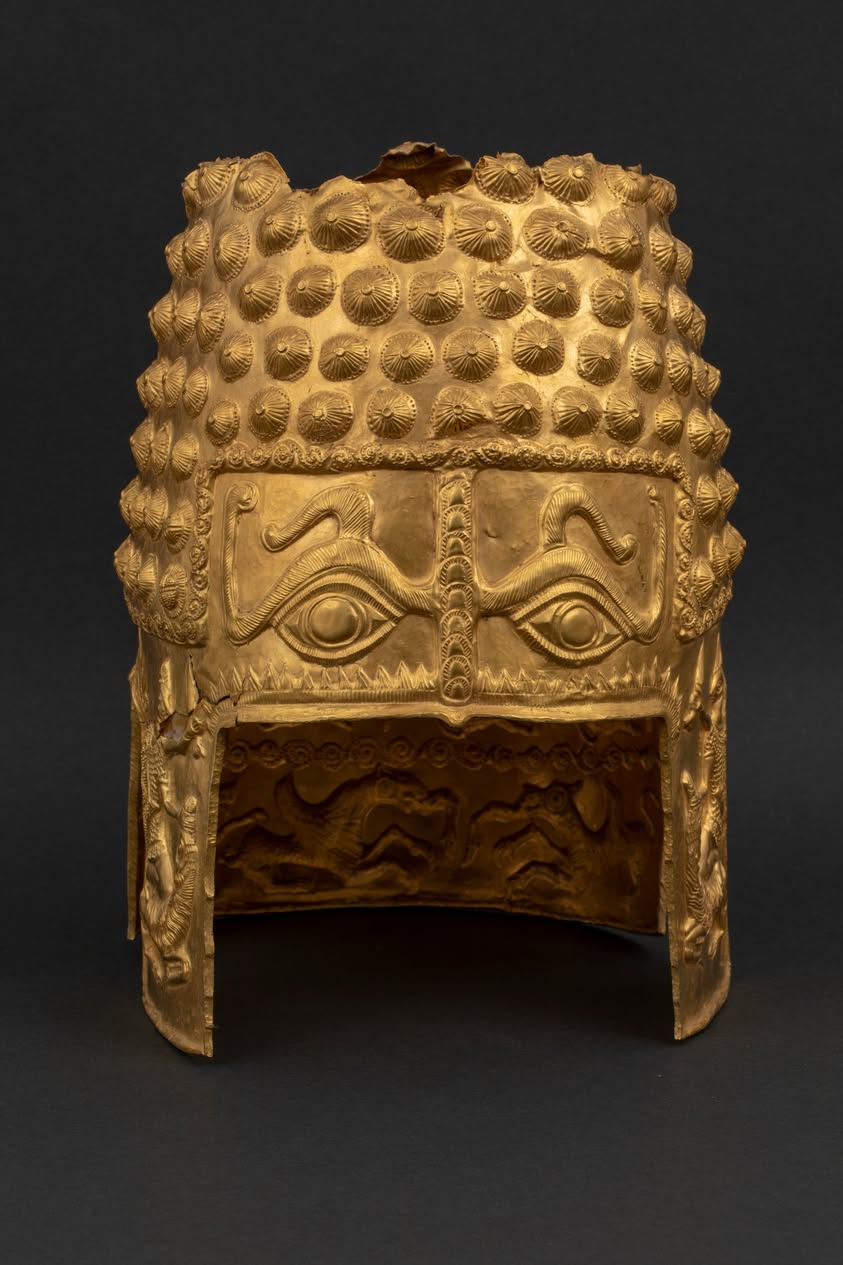
Copyright: Drents Museum
In the early hours of January 25, 2025, the suspects forced entry into the museum using explosives around 3:45 AM. Among the stolen items were three royal Dacian bracelets, as well as the legendary Coțofenești helmet, dating back to approximately 450 BC. The artifacts were part of the museum’s special exhibition Dacia – Empire of Gold and Silver.
The Coțofenești helmet, holds great historical significance, features unique decorations depicting various ancient Greek and Eurasian influences. Its serendipitous finding is the stuff of films – it was originally discovered by children after a rainstorm in 1927. The stolen bracelets are part of a rare collection of 24 pieces originally found in sacrificial pits at Sarmizegetusa Regia, the ancient Dacian capital. These golden artifacts were never worn but were instead placed directly into the royal treasury as offerings.
“This is a dark day for the Drents Museum in Assen and the National History Museum of Romania in Bucharest,” said Harry Tupan, General Director of the Drents Museum. “In its 170-year existence, there has never been such a major incident. We are intensely shocked by the events.”
Police investigators have identified a potential lead in the case. Approximately 30 minutes after the museum break-in, at 4:15 AM, authorities received reports of a car fire which they believe may be connected to the heist, suggesting the perpetrators might have switched to another vehicle in that area. Marco Out, Mayor of Assen, confirmed that several ministries, including the Ministry of Foreign Affairs, are involved in the investigation already underway. The forensic teams on site and CCTV footage are being reviewed. In addition, Interpol has been brought in to assist with the international investigation. While multiple suspects are believed to be involved, no arrests have yet been made.
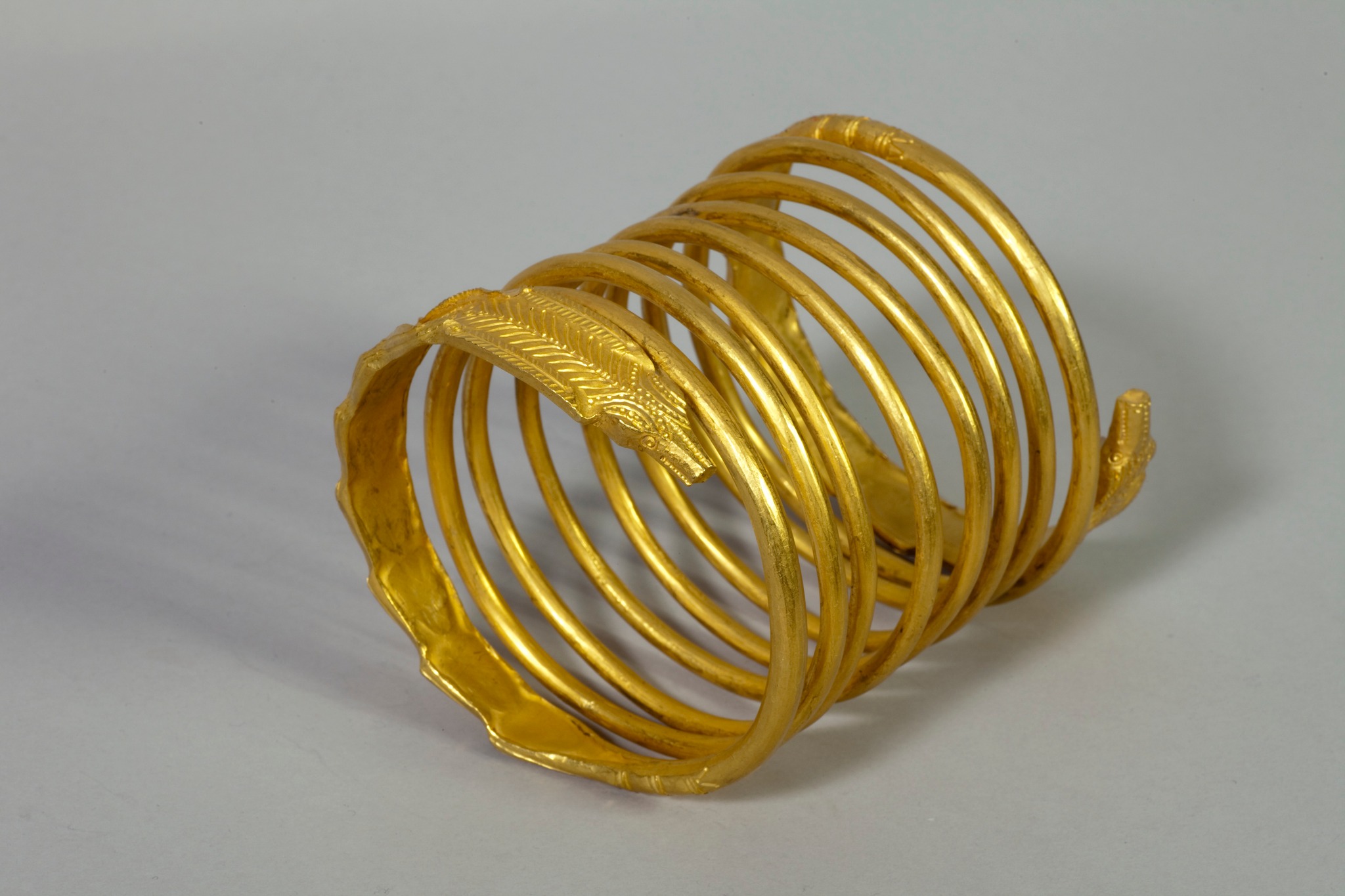
Copyright: Drents Museum
The museum sustained damage from the explosion but reported no injuries. It will remain closed until January 31 for investigation, restoration work, and preparation for a new exhibition.
Sadly, this is not the first time that Dacia’s riches have been pillaged. National Geographic wrote a spread in 2015 that detailed the decades-long campaign to recover and return the items to their home country – Romania. It states that in the 1990s, thieves bought timber-clearing permits from corrupt officials as a cover, then used metal detectors to search the Dacian capital of Sarmizegetusa Regia. The thieves allegedly worked undisturbed, many using timber-clearing permits from corrupt officials as a cover for their plundering. Due of the widespread looting, Sarmizegetusa’s stolen gold was nearly lost. Recovering it is said to have involved European and U.S. authorities and a decade of dogged sleuthing by Romanian prosecutors and museum curators. The full extent of the looting became clear years later when some of the illegal excavators were arrested and confessed to police.
However, National Geographic says it took years to track down the gold. It is no surprise that the bracelets, and thousands of crudely minted silver and gold coins found with them, apparently began surfacing on the international market almost immediately after they were plundered, offered to collectors privately and at auctions in New York, Paris, and Zurich. The biggest break came in 2001 when a Romanian man with two mysterious gold spiral bracelets reportedly contacted archaeologist Barbara Deppert-Lippitz. Dr. Deppert Lippitz is an independent expert of ancient gold licensed to assess antiquities by the German Chamber of Commerce and Industry in Frankfurt, Germany.
After meeting with the man, Dr. Deppert-Lippitz is said to have notified prosecutors and museum officials in Romania. Over the next five years, the archaeologist allegedly brokered a series of deals that allowed the Romanian government to buy back the bracelets from owners in Europe. Part of the arrangement led to the discovery of the sellers’ identities, which, in turn, helped authorities build legal cases against the looters. In addition, many of the looted coins were reportedly recovered by the FBI in the United States and were also bought back by the Romanian government.
In the end, a number of looters were convicted in Romanian courts and ordered to repay close to a million dollars in damages, per NatGeo.
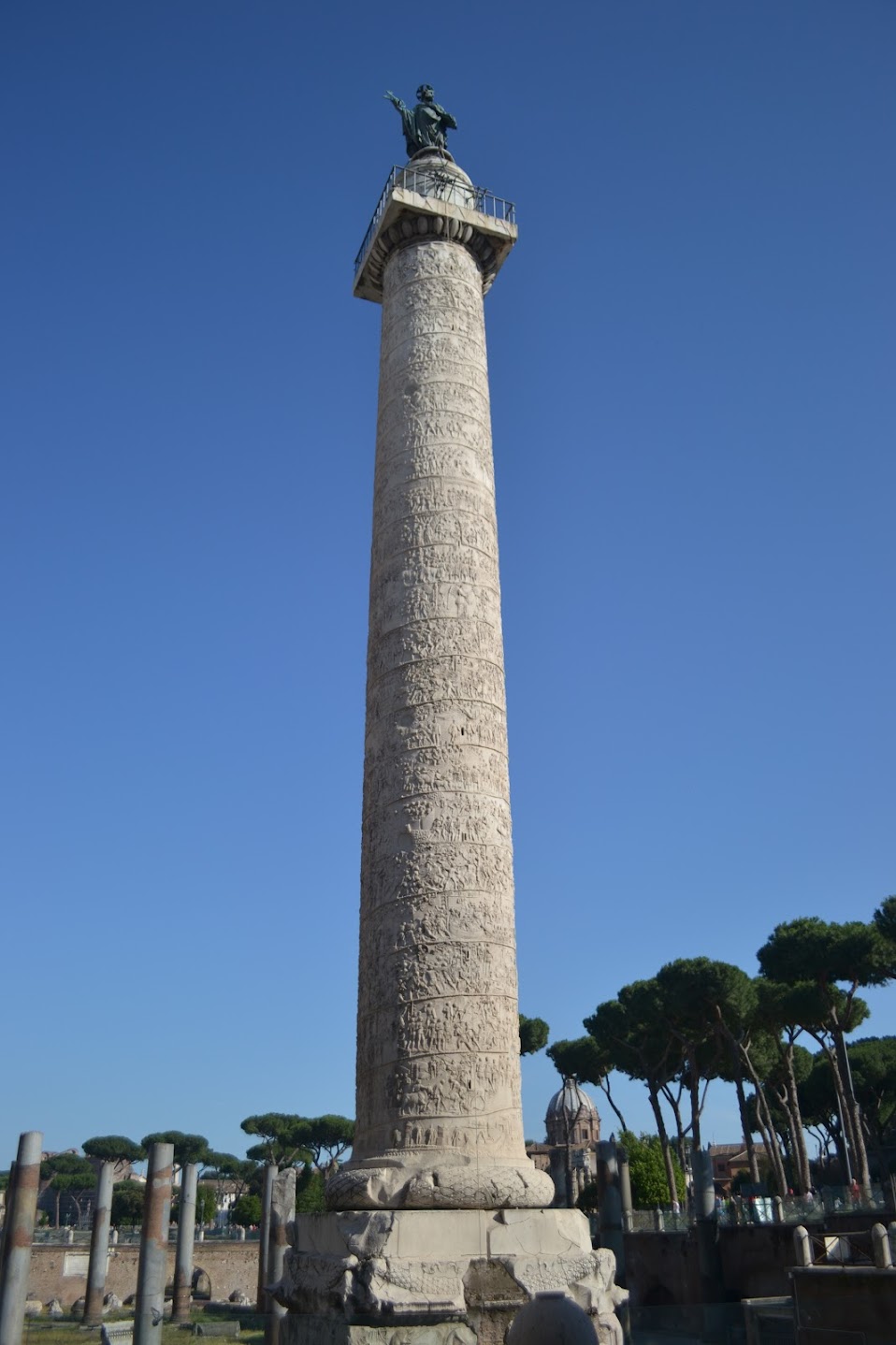
Copyright: Leila A. Amineddoleh
However, the looting of Dacia dates back nearly two thousand years, as commemorated in one of Rome’s most famous monuments. Trajan’s Column recounts the victory of Roman domination and plunder of Dacia. Emperor Trajan’s war campaigns against Dacia benefited the Roman Empire’s finances through the acquisition of gold mines. The rich victory has been commemorated by the construction of the Trajan Column, which depicts the Dacian Wars’ most important moments in stone carvings.
Dacia, centered in what is now modern-day Romania, was a prosperous nation tracing its roots to the 7th century B.C., as a conglomeration of ethnic groups. The nation, a well-organized society with a strong army and strongly fortified cities, posed a danger to Rome. Eventually, the nations entered into a conflict beginning in 85 A.D. The conflict continued and escalated into two campaigns led by Emperor Trajan, the Dacian Wars of 101-102 AD and 105-106 AD. Trajan defeated the Dacian army, obliterated its culture, incorporated the nation into the Roman Empire, and returned to Rome with a vast treasure.
One of the few Dacian cultural items that remain today are its golden bracelets. Since there are few remnants of this culture, the bracelets are precious symbols of the lost society. The oldest Dacian bracelets discovered date to the 3rd and 4th centuries B.C. They were constructed of gold mined from the Carpathian Mountains using techniques that are a marvel to archaeologist, considering the technology of that time. Historians believe these bracelets belonged to royalty and were used for Dacian rituals since they were richly made of 24k gold. The discovery of the Dacian bracelets confirms the fact that the nation was rich in gold, and that that the Romans were motivated to conquer Dacia because of its wealth of precious metal deposits. Unfortunately, these rare remnants of a defeated nation are still being looted. As discussed above, some of these remaining pieces were stolen from Romania in the late 1990s and early 2000s. And now, thieves again stole Dacian gold– this time in an explosive robbery.
by Amineddoleh & Associates LLC | Nov 20, 2024 |
 The team at Amineddoleh & Associates, LLC is proud to announce that our founder has been ranked on the Observer’s Business of Art Power List for her work as one of those “bold innovators steering today’s art world through shifting markets, new collector dynamics and cultural reinvention.”
The team at Amineddoleh & Associates, LLC is proud to announce that our founder has been ranked on the Observer’s Business of Art Power List for her work as one of those “bold innovators steering today’s art world through shifting markets, new collector dynamics and cultural reinvention.”
The publication remarks on Leila’s “reputation for change-making by handling high-stakes cases concerning everything from Nazi-looted art restitution to multimillion-dollar art-backed loans.” The Observer reminds readers of our founder’s third-year ranking in the Chambers High Net Worth Guide this year.
Leila is also lauded for her work as a mediator for MediateArt, using her “knowledge of the art world to guide contract negotiations and untangle delicate disputes.” Ultimately, the Observer states: “[a]s long as there are art world power plays, Amineddoleh’s influence will remain woven into the fabric of the industry—bringing a necessary rigor to an often murky market.”
We congratulate our founder, Leila Amineddoleh, on this remarkable accomplishment. Read the article here.
by Amineddoleh & Associates LLC | Nov 11, 2024 |
Developments in artificial intelligence (“AI”) are occurring at break-neck speed; just as this technology is rapidly evolving, the law is attempting to catch up. In the summer of 2023, our founder presented a lecture on the topic of AI and intellectual property law for Holo Art Collective. Since last year’s talk, “The Future of Copyright in AI Art,” there have been a flurry of AI developments and copyright law clarifications.
According to 15 U.S. Code § 9401, artificial intelligence is a “machine-based system that can, for a given set of human-defined objectives, make predictions, recommendations or decisions influencing real or virtual environments.” 15 U.S.C. § 9401. A type of AI, generative artificial intelligence (“GAI”), is defined as “an algorithm that generates new outputs based on the data it has been trained on. … Generative AI creates new content in the form of images, text, audio, and more.” AI Terms for Legal Professionals: Understanding What Powers Legal Tech, LexisNexis Legal Insights, March 23, 2023. GAI programs like DALL-E 2, Stable Diffusion, and Midjourney allow “artists and enthusiasts to produce innumerable works of great visual interest with simple textual instructions.”
 These tools have revolutionized the way artists create. Take musical genius Paul McCartney, who used artificial intelligence to help revive the cassette audio of the late John Lennon. McCartney and Ringo Starr used this breakthrough technology to help produce The Beatles’ final song Now and Then – the band’s first release since 1995. Remarkably, Now and Then just made history as the first AI-assisted song to earn a Grammy nomination.
These tools have revolutionized the way artists create. Take musical genius Paul McCartney, who used artificial intelligence to help revive the cassette audio of the late John Lennon. McCartney and Ringo Starr used this breakthrough technology to help produce The Beatles’ final song Now and Then – the band’s first release since 1995. Remarkably, Now and Then just made history as the first AI-assisted song to earn a Grammy nomination.
However, as AI enters a new era in the world of artistic creation, it’s worth remembering that the technology also has a dark side. Most notably, AI has spurred the creation of “deepfakes” or manipulated media that creates “realistic digital impersonations, avatars, or derivative images based on pre-existing source material.” For example, a creator called “Ghostwriter” wrote and released a song called “Heart on My Sleeve” using both Drake’s and the Weeknd’s voices. To the shock of the music industry, the song was submitted to the Grammy’s this year. Recording Academy CEO Harvey Mason Jr. told The New York Times, “It’s absolutely eligible because it was written by a human.”
This argument goes to the heart of burgeoning copyright law and the use of AI for creative works. In a blow to creators of AI-generated content, the U.S. Copyright Office reversed its decision last year to protect AI creator Kristina Kashtanova’s graphic novel, Zarya of the Dawn. The text of the book was written by Kashtanova, but the images were all generated by Midjourney, a generative AI program. Although the Copyright Office initially granted registration to Kashtanova, it withdrew it after learning that the images in her book were AI-generated. According to the Copyright Office, the basis for rejection was the lack of human authorship “[A]uthorship is protected by copyright. However…the images… are not the product of human authorship.” U.S. Copyright Office Review Board, Letter Response to Previous Response Seeking Additional Copyright Information for Zarya of the Dawn Registration # VAu001480196 (Previous Correspondence ID: 1-5GB561K).
Then in August of last year, a U.S. District Court upheld the Copyright Office’s denial of registration for another AI-generated work. In 2018, Stephen Thaler applied for a copyright for an artwork created by a computer system named “Creativity Machine.” The Copyright Office denied the application because the work “lack[ed] the human authorship necessary to support a copyright claim,” noting that copyright law only extends to works created by human beings, and the work in question was created solely by Creativity Machine. Thaler v. Perlmutter, 687 F. Supp. 3d 140, 143 (D.D.C. 2023). Thaler twice requested reconsideration, but they were denied both times. Finally, Thaler challenged this decision in the U.S. District Court of the District of Columbia.
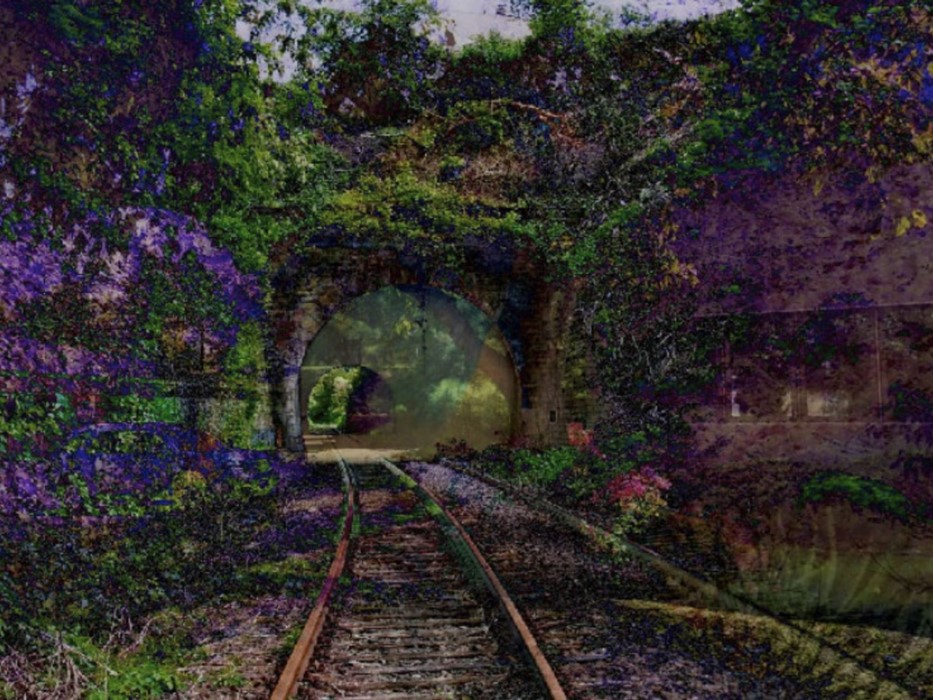
“A Recent Entrance to Paradise,” created by the Creativity Machine
As the Court stated, Thaler “attempts to complicate the issues presented by devoting a substantial portion of his briefing to the… the work-for-hire doctrine.” Id. at 145. Importantly, the Court stated, “Copyright is designed to adapt with the times. Underlying that adaptability, however, has been a consistent understanding that human creativity is the sine qua non at the core of copyrightability.” Id. at 146. The DC Circuit emphasized that even as technology evolves and provides tools to artists, a human component is essential. The court noted, “[c]opyright has never stretched so far, however, as to protect works generated by new forms of technology operating absent any guiding human hand, as the plaintiff urges here. Human authorship is a bedrock requirement of copyright.” Id. at 146.
Judge Beryl A. Howell points back to the origins of copyright law in U.S. jurisprudence. She states that the requirement is part of the “plain text” of the Copyright Act. Id. at 146. The Act protects “original works of authorship fixed in any tangible medium of expression, now known or later developed, from which they can be perceived, reproduced, or otherwise communicated, either directly or with the aid of a machine or device.” 17 U.S.C. § 102(a). The court urges that “The ‘fixing’ of the work in the tangible medium must be done ‘by or under the authority of the author.’” Thaler, 687 F. Supp. 3d at 147 (quoting 17 U.S.C. § 101).
The court found that eligibility for copyright necessitates an actual “author,” and that the author must be a human being. Thaler, 687 F. Supp. 3d at 147. As such, the Copyright Office’s rejection stands. Thaler is currently appealing the decision.
Numerous other disputes have been settled during the past year, partly due to uncertainties in the law concerning AI-generated material. One matter, Main Sequence, Ltd. et al v. Dudesy, LLC et al, 2:24CV00711, was settled between the estate of comedian George Carlin and two podcasters who purportedly used AI to create a Carlin comedy special that was aired on YouTube. As part of the settlement, the podcasters removed the material from all platforms. They also reportedly agreed to permanently stop using Carlin’s image, voice, or likeness in any future podcast without consent.
The scope of AI’s effects can be seen across most industries. Dozens of other matters have been filed, with parties including news organizations, tech companies, politicians, fashion companies, record labels, artists, and authors. Therefore, it is not surprising that government agencies, including the US Executive Office, have addressed the role of AI in the realm of intellectual property.
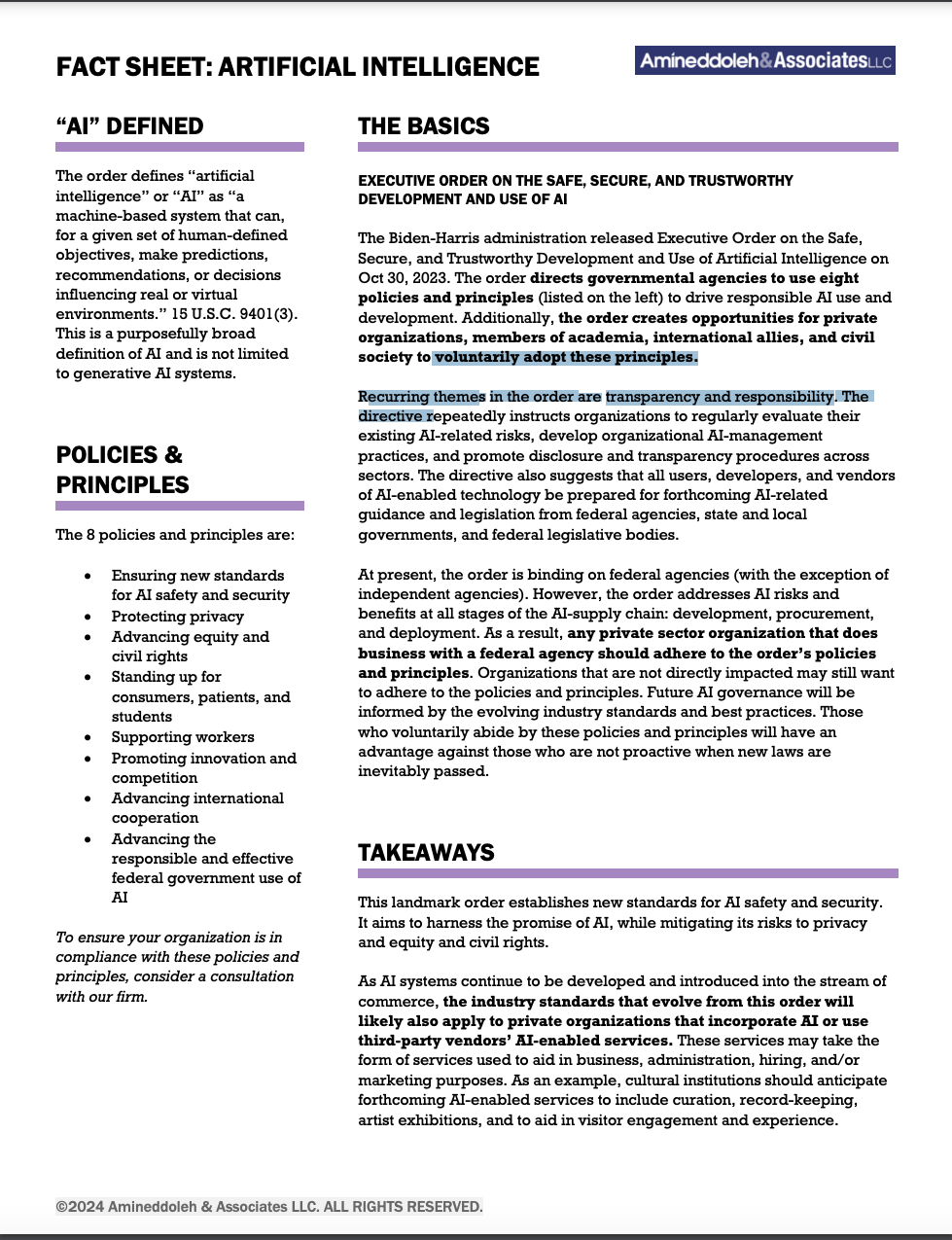 As previously discussed in our blog (which includes a helpful fact sheet) earlier this year, the US President addressed AI usage. In October 2023, the Biden-Harris administration released the Executive Order on the Safe, Secure, and Trustworthy Development and Use of Artificial Intelligence. The order broadly defines “AI” as “a machine-based system that can, for a given set of human-defined objectives, make predictions, recommendations, or decisions influencing real or virtual environments.” Exec. Order No. 14110, 88 Fed. Reg. 75191 (Oct. 30, 2023) (citing 15 U.S.C. 9401(3)). It also acknowledges that the Executive Offices “places the highest urgency on governing the development and use of AI safely and responsibly.” Exec. Order No. 14110, 88 Fed. Reg. 75191 (Oct. 30, 2023). As such, the order directs government agencies to abide by eight policies and principles to advance and govern the development and use of AI.
As previously discussed in our blog (which includes a helpful fact sheet) earlier this year, the US President addressed AI usage. In October 2023, the Biden-Harris administration released the Executive Order on the Safe, Secure, and Trustworthy Development and Use of Artificial Intelligence. The order broadly defines “AI” as “a machine-based system that can, for a given set of human-defined objectives, make predictions, recommendations, or decisions influencing real or virtual environments.” Exec. Order No. 14110, 88 Fed. Reg. 75191 (Oct. 30, 2023) (citing 15 U.S.C. 9401(3)). It also acknowledges that the Executive Offices “places the highest urgency on governing the development and use of AI safely and responsibly.” Exec. Order No. 14110, 88 Fed. Reg. 75191 (Oct. 30, 2023). As such, the order directs government agencies to abide by eight policies and principles to advance and govern the development and use of AI.
The U.S. Patent and Trademark Office (“USPTO”) has also addressed the use of AI. The USPTO states on its website that it is “focused on incentivizing more innovation, inclusively and in key technology areas such as artificial intelligence (AI) and other emerging technologies (ET) …protecting that innovation and bringing it to impact to enhance our country’s economic prosperity and national security and to solve world problems.” United States Patent and Trademark Office, Artificial Intelligence, https://www.uspto.gov/initiatives/artificial-intelligence.
Importantly, the US Copyright Office addresses AI-generated works in its bulletin, Copyright Registration Guidance: Works Containing Material Generated by Artificial Intelligence. 37 C.F.R. § 202 (2023). The bulletin provides instructions on how to properly apply for works containing AI-generated material.
Even the Federal Trade Commission launched an inquiry into generative AI investments. In January 2024, the FTC announced the issuance of orders to five companies (Alphabet, Inc.,Amazon.com, Inc., Anthropic PBC, Microsoft Corp., and OpenAI, Inc.) requiring them to submit information concerning investments and partnerships involving generative AI companies and major cloud service providers. While the agency recognizes that “new technologies can create new markets and healthy competition,” the FTC also has a role in guarding against tactics that would undermine fair competition.
These concerns are not unique to the U.S. The World Intellectual Property Organization (WIPO) has long considered the effects of AI on intellectual property and has questioned whether AI innovation needs the incentives generally associated with intellectual property, and if the advent of AI necessitates changes to long-standing IP principles and frameworks.
These are questions that creators, attorneys, and governments will be grappling with during the coming years and decades, as they balance the interests of AI, the law, and ethics.
by Amineddoleh & Associates LLC | Oct 10, 2024 |
For the past month we’ve been lucky to work with Shelby Rose, our new Legal Intern. Shelby brings to the firm her incredible journalism experience, impressive legal qualifications, and a passion for art. Read more about her HERE. Welcome Shelby!
by Amineddoleh & Associates LLC | Sep 20, 2024 |
I love my job. I love being an art lawyer. I am grateful for the opportunity to work with artists, collectors, and art market participants. I am honored to have represented sovereign governments in landmark cultural heritage matters, including Italy and Greece. When I’m not working, my thoughts often return to art. Somehow, I never escape from work, even when I’m on vacation. And so it seems that every trip confronts me with art crime issues. But then again, I seem to pursue art stories everywhere I go.
ART CRIME IN ITALY
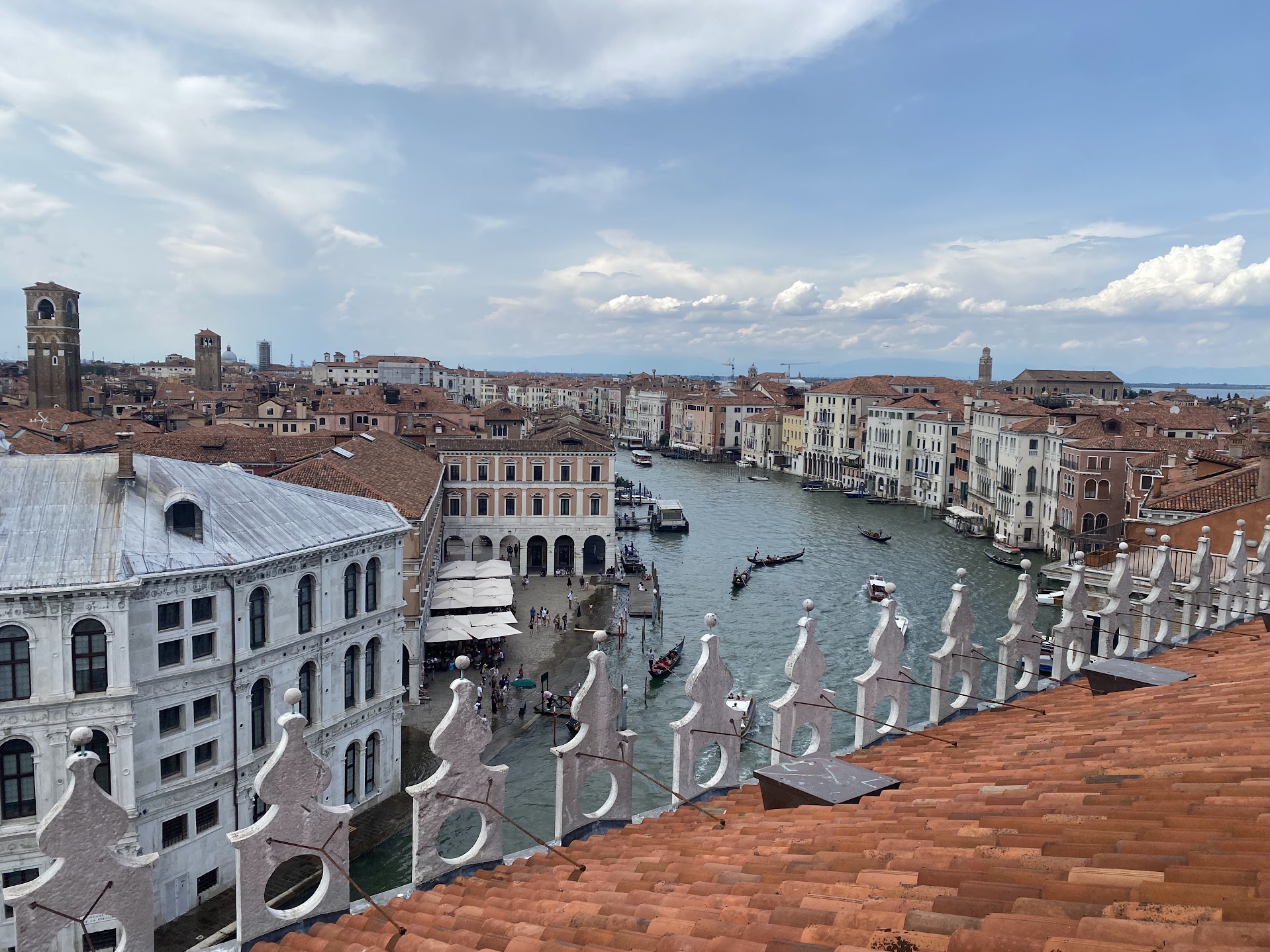
La Serenissima. Copyright: Leila A. Amineddoleh
During a recent week away from the office, I traveled to Italy (one of my favorite places in the world, a country I have the privilege of representing, and the country with the greatest number of UNESCO World Heritage Sites). As my family and I meandered through the Veneto, we stopped in lovely towns that all played host to art crimes. One was Treviso, the site of a forgery scandal involving the sale of hundreds of millions of dollars of forged paintings. Another stop was Venice. Affectionately known as La Serenissima, it has been the beautiful backdrop of numerous art crimes, including one particularly brazen theft from the wrongly named “Gentleman Thief.” (Can a thief ever truly be a gentleman?) I referenced another well-known crime, the theft of a14th-century folio from an illuminated manuscript by Doge Andrea Dandolo, in an article I wrote for Artsy back in 2020.
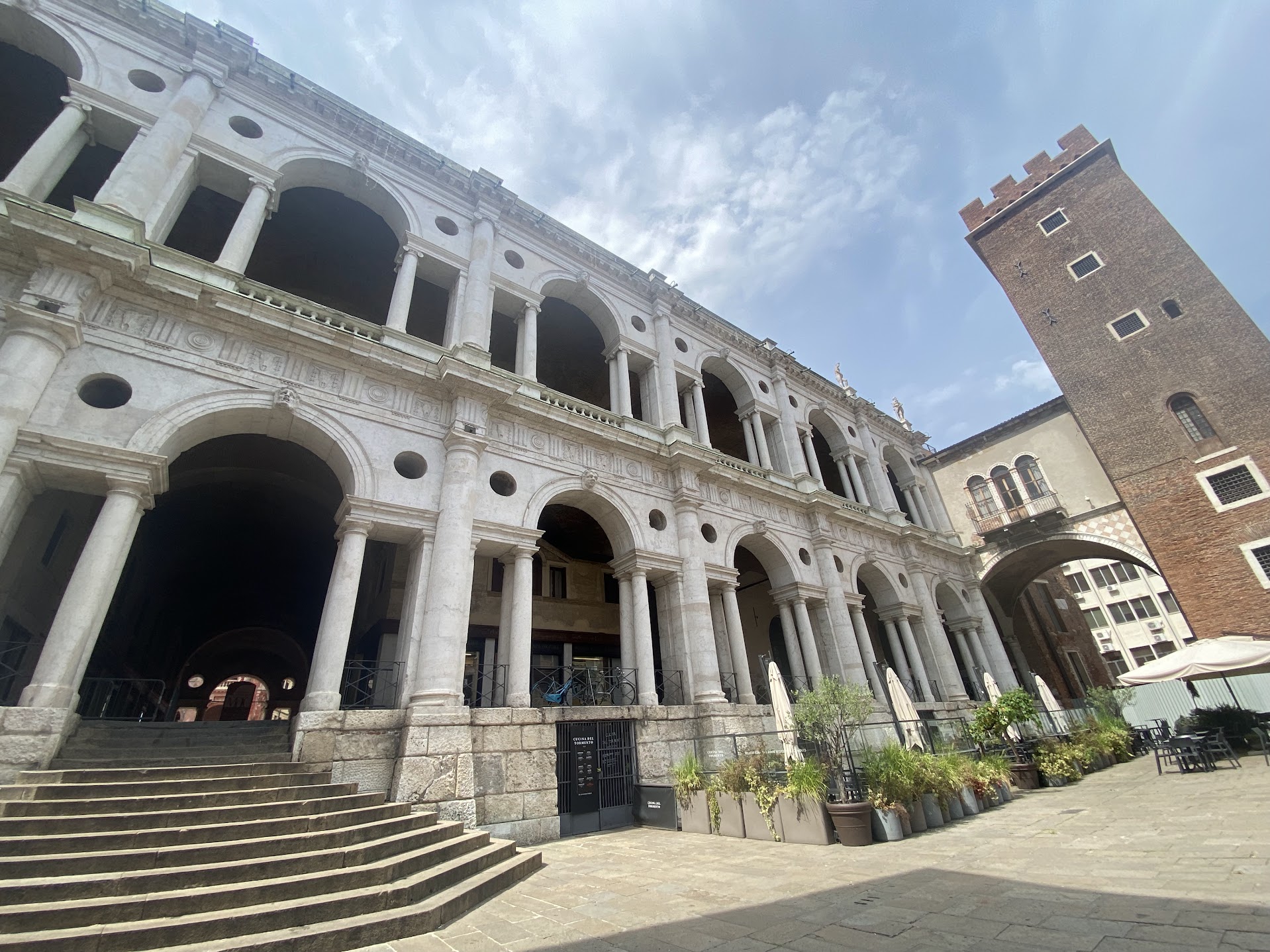
Palladian architecture in Vicenza. Copyright: Leila A. Amineddoleh
Sadly, a more recent art crime in the Veneto involved two American soldiers who epitomized the recent trend of bad tourism. Last year, the soldiers foolishly spray painted graffiti onto Vicenza’s basilica, designed by famed Andrea Palladio (considered by some to be the father of modern architecture. The town of Vicenza, a literal open-air museum of Italian Renaissance architectural gems, has taken this matter seriously. The soldiers now face jail time and heavy fines.
VERONA AND ART THEFTS
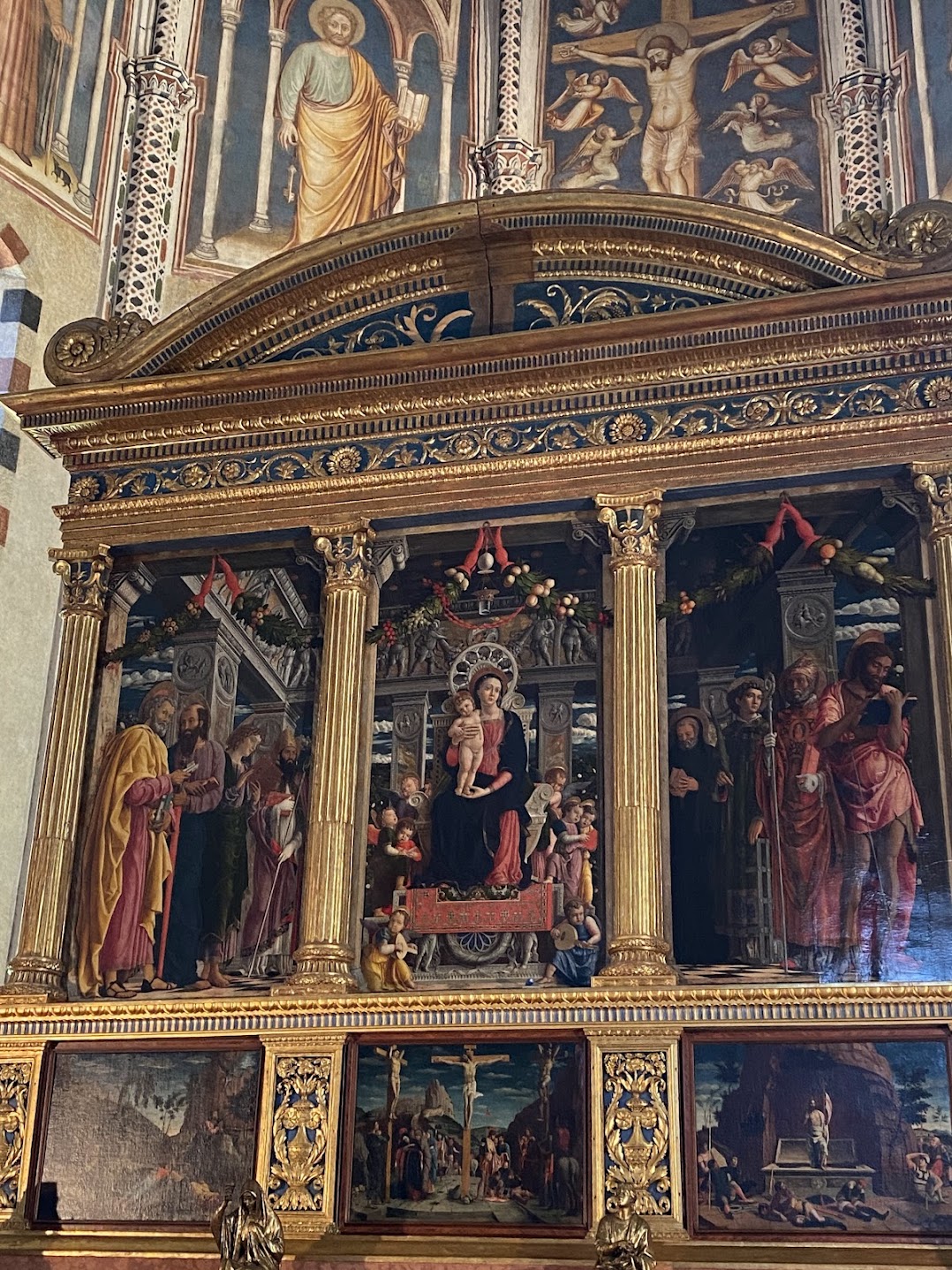
Altarpiece by Andrea Mantegna. Copyright: Leila A. Amineddoleh
For me, the art crime winner (or more accurately, the loser) is Verona. Serving as the inspiration for the Bard’s Two Gentlemen of Verona and Romeo and Juliet (many of the city’s establishments are more than happy to post Shakespearean references), Verona has long been one of my favorite places in Italy. Besides literary inspiration, the city is known for its 2000-year-old intact pink-hued arena. One of the best-preserved ancient structures of its kind, the town still hosts live events in the theatre. Its summer opera festival is world famous. Its magic and beauty have moved people for centuries.
Sadly, Verona has also inspired art crimes. During the Napoleonic Wars, buildings and sites across the city were destroyed. One was the Abbey of San Zeno which was part of the present-day Basilica of San Zeno. Today, only a brick tower and cloister survive from the abbey. Unfortunately, the artworks inside the Basilica were not left unscathed.
The San Zeno Altarpiece by Andrea Mantegna was painted in Padua and likely arrived in Verona in 1459. It is storied to be the first Renaissance painting seen in Verona. Although it appears to be executed in oil due to its rich colors, Mantegna painted it in tempera. The large work, which includes an image of Saint Zeno, had a turbulent life. It was looted by Napoleonic Forces in 1797 and returned in 1815, but in an incomplete state. The predella panels were never returned from France. When the altarpiece was finally reinstalled in 1871, copies of the missing panels by Paolino Caliari were inserted.
To protect the piece from the ravages of WWI, the altarpiece was transported to safety in 1915. It was sent to Florence for safekeeping. After the war, it was sent to Verona’s Castelvecchio (“old castle”) and then to Pinacoteca di Brera (in Milan) for restoration. It returned home to San Zeno in 1927. Shockingly, in 1973 the left panel was stolen and used as ransom. The thief was paid 8 million lire and the panel was returned.
CASTELVECCHIO
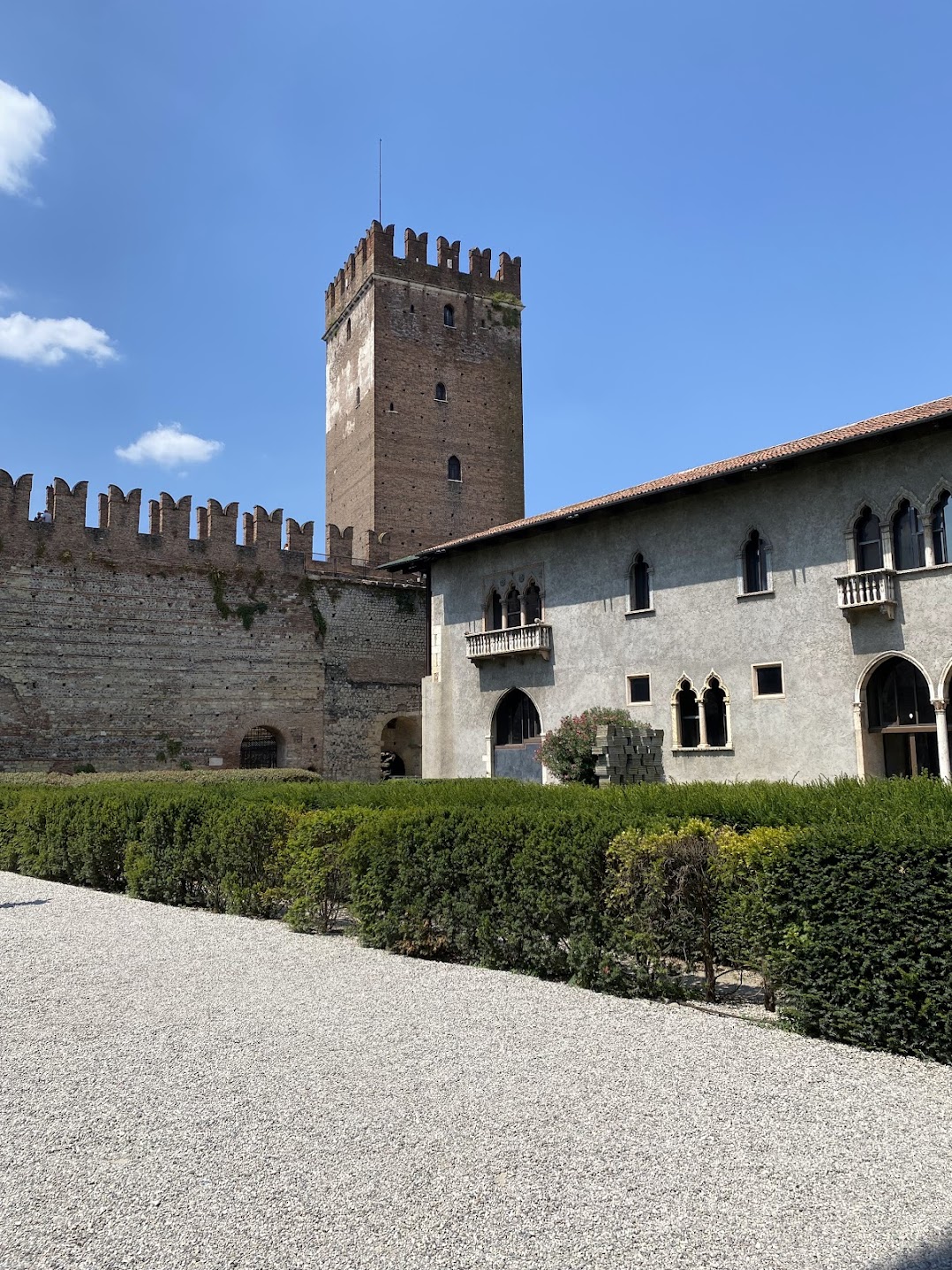
Castelvecchio. Copyright: Leila A. Amineddoleh
Tragically, the city is still not immune to art theft. In 2015, Verona’s elegant Castelvecchio (“old castle”) was the scene of a shocking crime. The Medieval Castelvecchio looks out over a gorgeous bridge that spans the Adige River. The castle, likely built on top of a Roman fortress, served many roles since its construction during the Middle Ages, between 1354 and 1376. It is known as an important military structure built by the Scaligeri family, with the bridge serving as a safety route for members of the dynastic family to flee during times of conflict.
The castle was taken by Venetian forces, and eventually it was damaged by French troops during the Napoleonic Wars. It also faced destruction during WWII, when the bridge was demolished by the German army during its retreat in 1945. The bridge was rebuilt in 1949. During that same period, the castle was also damaged. But it was rebuilt a decade later by Carlo Scarpa. The castle now serves as a museum.
Castelvecchio’s museum now houses an impressive gallery of paintings. One night in 2015, the collection was the victim of an art heist. 17 paintings were stolen as a crime of opportunity due to subpar security; three men entered the museum before the building’s alarm system was activated for the night.
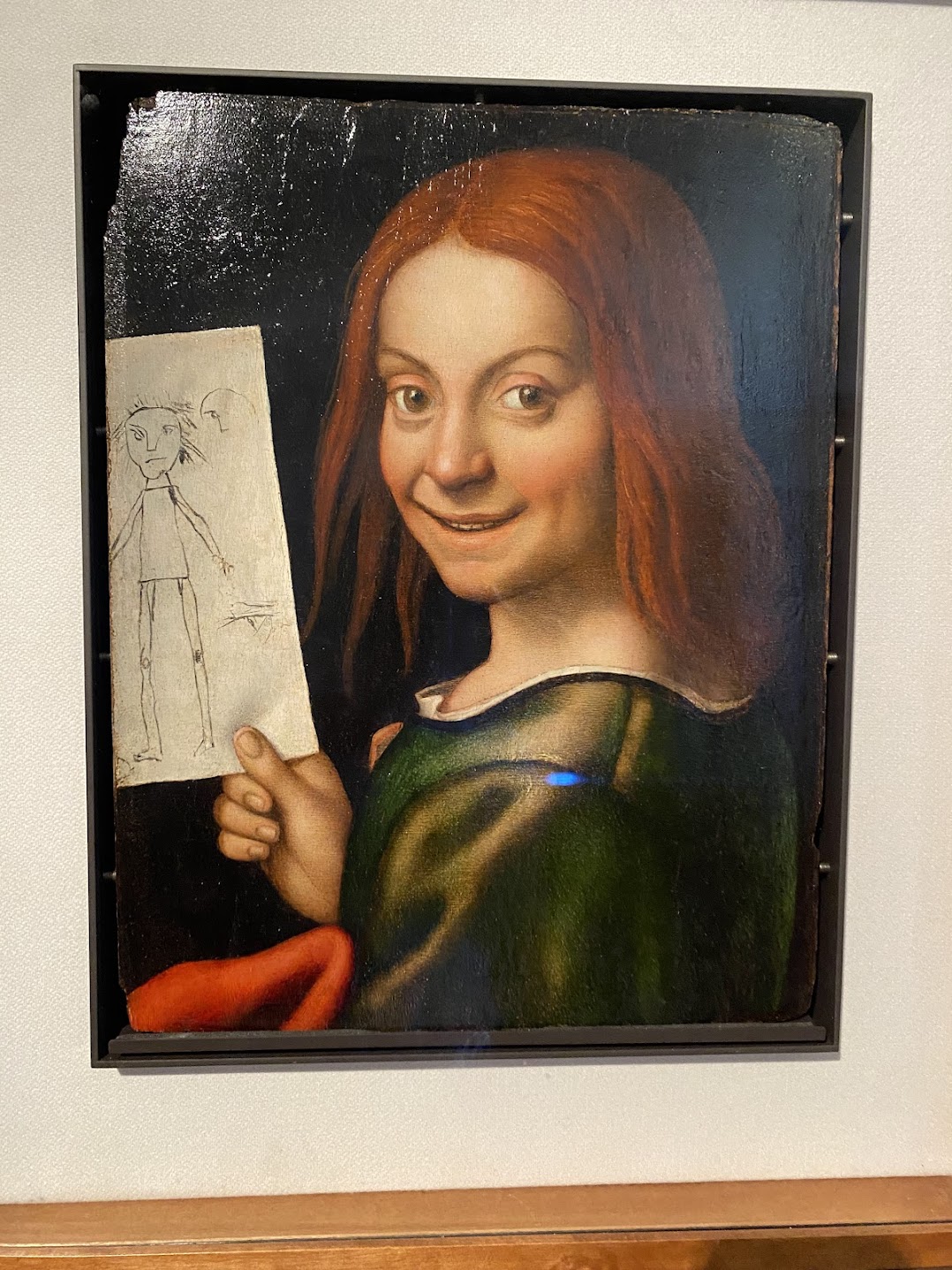
Portrait of a Young Boy Holding a Child’s Drawing
The stolen paintings were brought to Ukraine. They were wrapped in black plastic drop cloths and buried behind scrubs. The next year, upon their discovery, the works were returned to Italy. The pieces suffered minor damage. It is believed that the theft was an inside job, with 12 people arrested in connection to the crime who were all convicted in 2020. Included in the group was a security guard and his Eastern European girlfriend. The judge handed down sentences of between five and 10 years for all thieves.
Included in the theft were Gian Francesco Caroto’s Portrait of a Young Boy Holding a Child’s Drawing. Painted in 1520, this unusual work has captivated viewers due to its curious subject matter. Carota (“carrot” in Italian) painted a child with red hair (a “carrot-top”) so many believe the work is a self-portrait of the artist as a boy or a portrait of the artist’s son. The image features the child holding a drawing. Is this a drawing actually done by the child? If so, then this playful work may include an artwork within an artwork or even a work of joint authorship.
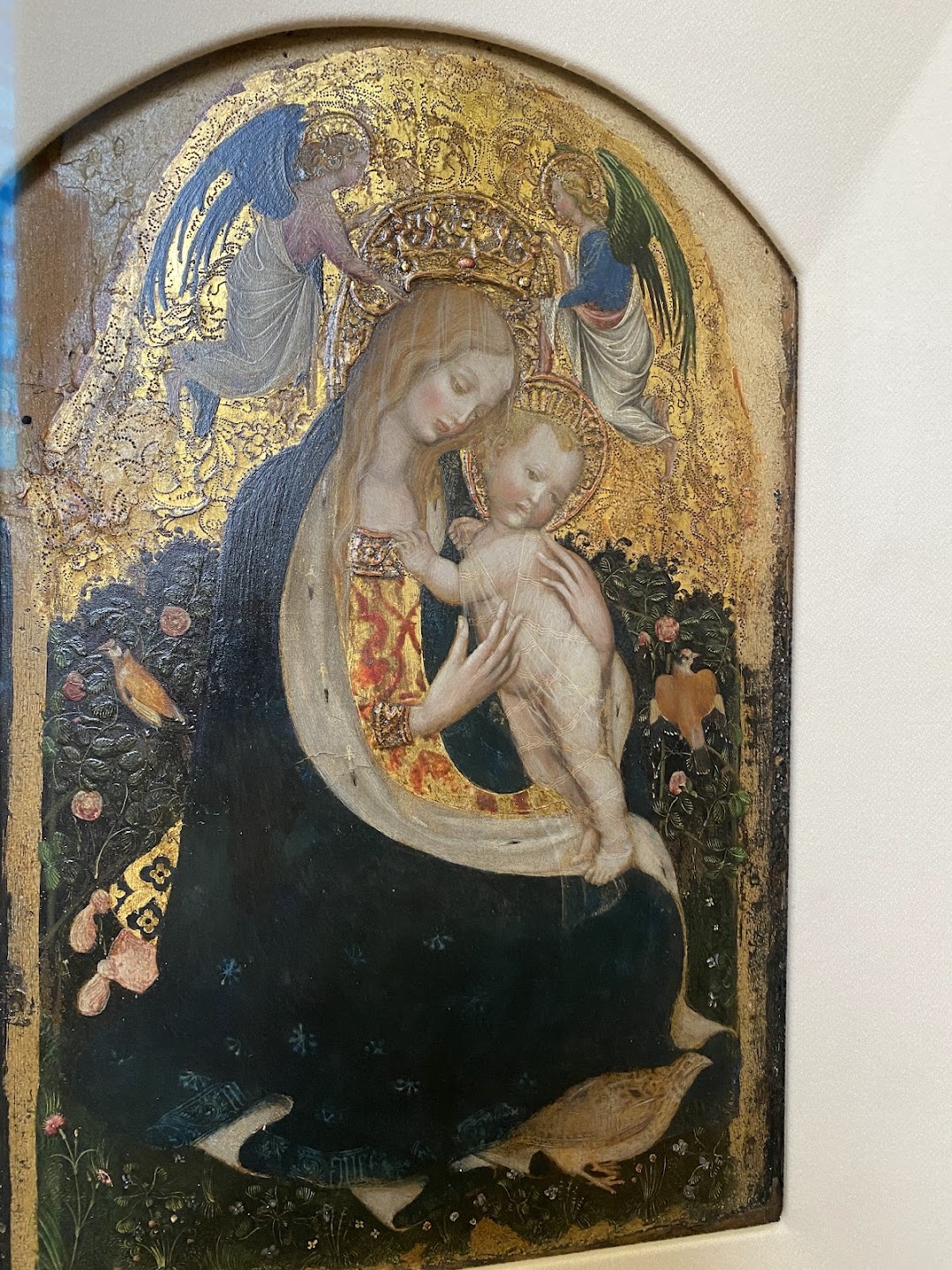
Madonna of the Quail
Another stolen superstar from the Castelvecchio was Pisanello’s Madonna of the Quail. Completed in 1420, the late Gothic style painting may have been the centerpiece of a domestic devotional work. The valuable work is known for the quality of its rendering of flora and fauna, set against a brilliant gold background.
While Verona has inspired love stories, artworks, and movies that reference two of best-known star-crossed lovers, the city has also faced its fair share of art crime. Perhaps this is not surprising in Italy, a country with an abundance of art and heritage.





 The team at Amineddoleh & Associates, LLC is proud to announce that our founder has been ranked on the Observer’s
The team at Amineddoleh & Associates, LLC is proud to announce that our founder has been ranked on the Observer’s  These tools have revolutionized the way artists create. Take musical genius Paul McCartney, who used artificial intelligence to
These tools have revolutionized the way artists create. Take musical genius Paul McCartney, who used artificial intelligence to 
 As previously discussed in our blog (which includes a
As previously discussed in our blog (which includes a




